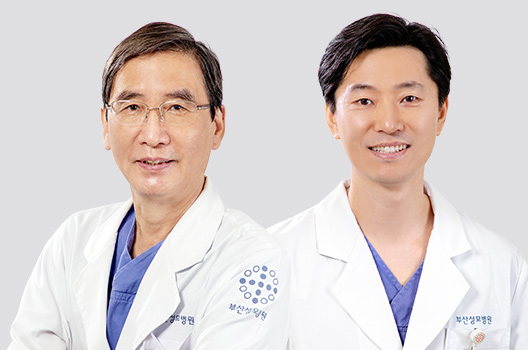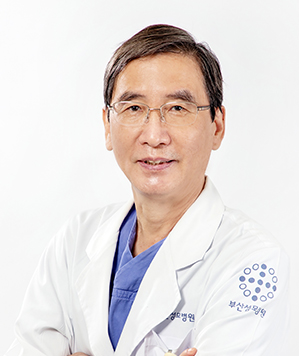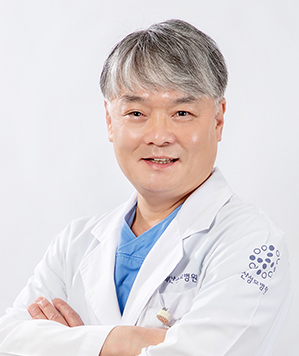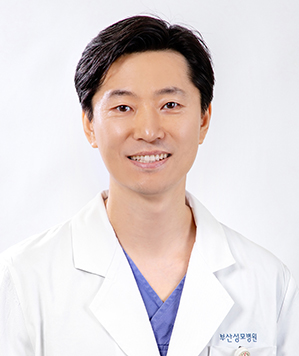Anesthesiology and Pain Medicine

Anesthesiology and Pain Medicine
- Inquiry
- +82-51-933-7377
- Outpatient Clinic Location :
- 3rd Floor
Introduction of Medical Department
-
The Department of Anesthesiology and Pain Medicine is largely divided into anesthesiology and pain treatment. The field of anesthesia observes patients to ensure that all commonly performed surgeries (inpatient and outpatient surgery) and various tests involving pain and risk can be performed smothly and safely. In addition, it helps to perform appropriate anesthesia and recover early, and manages postoperative pain for surgical patients, and provides pain-free delivery in the delivery room.
All doctors in the Department of Anesthesiology and Pain Medicine prioritize the safety of patients above all else in patient management due to the nature of the Department of Anesthesia, so all doctors cooperate and are fully committed to preoperative patient evaluation and anesthesia planning. To safely protect patients’ lives from all possible risks before and after surgery, we provide the best anesthesia services with advanced anesthesia equipment and safety monitoring equipment.
The pain field is a place to relieve and treat patients’ pain by treating and observing various acute and chronic pain and end-stage cancer pain through outpatient services. We are committed to patient treatment based on our excellent staff and rich experience. Pain is a kind of warning that informs us of abnormalities in our body, so it is necessary to recognize this warning quickly and treat it. But if it is not properly treated and becomes chronic, it can cause abnormalities in major organs such as the heart, lungs, brain, and spinal cord, even weakening the immune system making patients susceptible to other diseases, and causing depression and anxiety. The Pain Clinic provides early detection of pain, causative disease, treatment based on the mechanism of pain, drug therapy, nerve block method, etc., and prevention and education of pain disease.
- painful disease
-
- Headache: migraine, tension headache, cluster headache, mild headache, occipital neuralgia, chronic headache, etc.
- Facial pain: trigeminal neuralgia, glossopharyngeal neuralgia, atypical facial pain, jaw joint pain
- Cervical diseases: cervical intervertebral disc herniation, intervertebral joint syndrome, sprain, degenerative spondylosis, and whiplash syndrome (whiplash damage)
- Shoulder pain: shoulder pain such as frozen shoulder, impingement syndrome, arthritis, etc.
- Chest pain: thoracic radiculopathy, intercostal neuralgia, back and chest pain
- Back pain: lumbar herniated intervertebral disc, intervertebral joint syndrome, sprain, degenerative spondylosis, intervertebral disc disruption, spinal stenosis, and lumbar radiculopathy (sciatica)
- Pain after spinal surgery, postoperative neuropathic pain, and posttraumatic neuropathic pain
- Herpes zoster, postherpetic neuralgia, complex regional pain syndrome, and carpal tunnel syndrome
- Central pain (post-stroke pain, pain after spinal cord injury), phantom limb pain, and stump pain
- Pain caused by degenerative arthritis and various arthritis, tennis elbow (elbow lateral epicondylitis), and golf elbow (elbow medial epicondylitis)
- Pain caused by osteoporosis and compression fractures
- Chronic myalgia, and myofascial pain syndrome
- Chronic visceral pain, acute pain and postoperative pain
- Cancer pain, and pain after cancer treatment (chemotherapy, radiation, and surgery)
- Painless disease
-
- Facial nerve paralysis, and facial spasms
- Allergic rhinitis, tinnitus, and sudden deafness
- Blood circulation disorders (Raynaud’s disease)
- Hyperhidrosis, and autonomic ataxia
Introduction of medical staff

Young-Chul Park

Jong-Nam Lee

Jung-Man Park
- There may be a slight delay in the connection between 10:00 AM to 11:00 AM due to the high volume of phone calls. Please kindly understand that.
Medical Department
- Endocrinology
- Rheumatology
- Anesthesiology and Pain Medicine
- Pathology
- Urology
- Gynecology
- Pediatrics
- Gastroenterology
- Cardiology
- Neurology
- Neurosurgery
- Nephrology
- Ophthalmology
- Palliative Medicine
- Radiology
- General Surgery
- Emergency Medicine
- Otolaryngology
- Rehabilitation Medicine
- Neuropsychiatry
- Orthopedic Surgery
- Laboratory Medicine
- Dentistry
- Nuclear Medicine
- Hemato-Oncology
- Pulmonology

